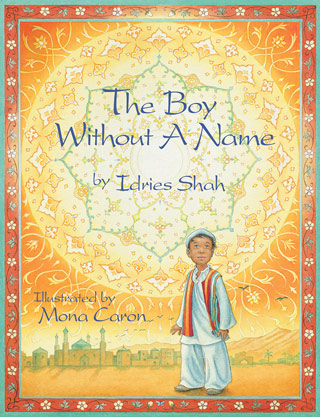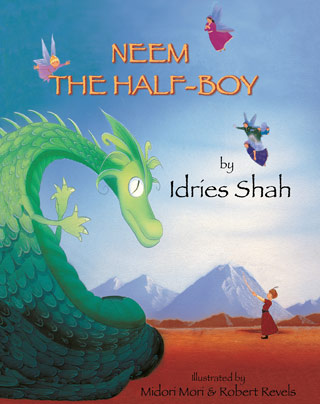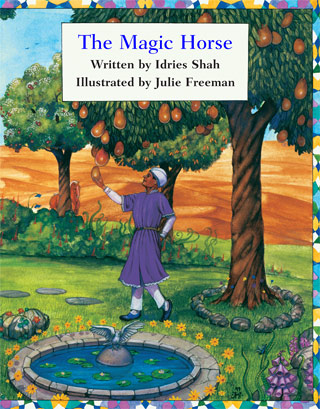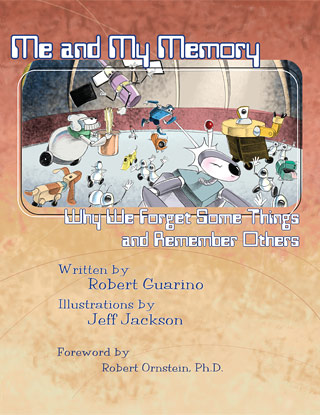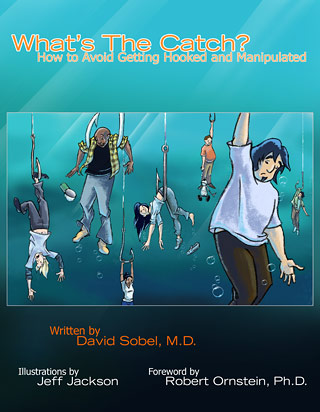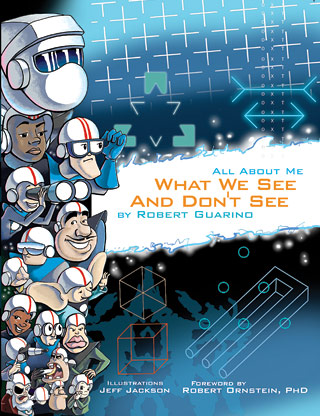Free Downloadable Teaching Resources for Grades 6–8
Hoopoe Books reader’s theater
Giving Students a Reason to Read, and Re-Read, Aloud
Download the printable instruction here
Download the printable one-act dramatic play here
Download the reading skills assessment chart here
OVERVIEW:
- The reader’s theater strategy combines students’ desire to perform with their need for oral reading practice. Reader’s theater offers an entertaining and engaging means of improving fluency through repetition, reading with expression, and enhancing comprehension.
- Reader’s theater is a way to involve students in reading aloud. In reader’s theater, students “perform” by reading the Hoopoe books’ scripts created for this purpose. Students can perform the scripts with or without costumes or props.
RATIONALE:
- Reader’s theater is a strategy that combines reading (and re-reading) practice and performing. Its goal is to enhance students’ reading skills and confidence by having them practice reading with a purpose. Reader’s theater gives students an authentic reason to read aloud.
OUTCOMES:
- Re-Reading to Develop Fluency:
Reader’s theater motivates reluctant readers and English language learners, and provides fluent readers the opportunity to explore genre and characterization. Hoopoe Books Reader’s Theater scripts can be used as early as first-grade. Re-reading is a key factor in developing fluency, which is necessary for comprehension. Students don’t even realize they are re-reading as they practice the script.
- Re-Reading to Develop Understanding:
The value of reader’s theater is increased when used as a strategy for increasing understanding of what is being read. Students also practice reading with expression when they take on the roles in the script.
- Re-Reading to Develop Voice:
Reader’s theater is a wonderful technique for helping readers learn to read aloud with expression and joy. Performing reader’s theater without props allows the readers to learn that the inflection in their voices needs to provide much of the drama of the story.
TESTIMONIAL:
- “I love watching my English language learners gain more fluency and confidence as they perform the Hoopoe Books Reader’s Theaters,” says educator and I Have a Dream volunteer, Leanne Lockhart. “They love hamming it up and making costumes and scenery too.”
INSTRUCTIONS:
Some students are hams — they just don’t know it until they get up in front of the group. There is no risk in reader’s theater, because no memorization is required. And, there’s opportunity for practice, so struggling readers are not put on the spot.
- Hand out a photocopied Hoopoe script
- Assign a part to each child
- Have her simply read the script aloud and act it out. That’s all you have to do.
“Magic” occurs when the students get to be on stage — even if that stage is the floor of the classroom or library. Shy children may blossom, and students develop a strong sense of community.
TIPS:
- Start slowly so students feel comfortable in the performance mode. Students do not memorize their parts; they always read from their scripts. Provide lots of opportunities for practice.
- Read the book several times, offering instructional support for new vocabulary, and for understanding the different characters. You can do many other activities with the story to develop understanding before doing the reader’s theater. *A complete set of lesson plans can be found on Hoopoe’s website.
- Students simply stand or sit in a semicircle or on a stage, if one is available.
- Model each character’s part and match roles to readers.
- If you have a larger group than the number of roles, you may have several readers’ theater groups going simultaneously.
- Work with small groups, not with the entire class, if possible.
- You might invite families or caregivers to a presentation, or invite another class to the reader’s theater enactment.
- You might also video the performance or do a radio podcast.
~May Hoopoe Reader’s Theater enliven your classroom and your students’ lives, as well as cement learning that lasts.
Teacher lesson plan
The Hoopoe Teaching-Stories series provides a multicultural program designed to meet the National Standards in Education and guide students towards mastery of the content required by the Common Core State Standards for Language Arts, the California Content Standards in English Language Learners, History/Social Science, and Visual and Performing Arts. These multicultural tales are designed with a wide range of student abilities in mind. Hoopoe Teaching-Stories can be used with: Advanced students, English-language learners, and students with learning disabilities or reading difficulties. Hoopoe Teaching-Stories prepare students to master the California Reading Common Core State Standards for Language Arts by helping them build skills in reading comprehension, literary response and analysis, and vocabulary development. Grades 6–8 (PDF): The Boy Without A Name Gr6–8 lesson plan
Education standards
Common Core State Standards for ELA – English Language Arts
Grade 6: The Boy Without A Name ELA alignment
Grade 7: The Boy Without A Name ELA alignment
Grade 8: The Boy Without A Name ELA alignment
California Content Standard Alignment:
Grades 6–8: The Boy Without A Name English Language Development
Grades 6–8: The Boy Without A Name History-Social Science
Grade 6: The Boy Without A Name Visual Arts
Grade 7: The Boy Without A Name Visual Arts
Grade 8: The Boy Without A Name Visual Arts
WIDA PRIME
Grades 6–12 Hoopoe titles have been correlated with the The Protocol for Review of Instructional Materials for English Language Learners (PRIME) through the World-Class Instructional Design and Assessment (WIDA) tool (https://prime.wceruw.org/instructionalMaterials/index.aspx). Click here for a copy of the report.
Hoopoe Books reader’s theater
Giving Students a Reason to Read, and Re-Read, Aloud
Download the printable instruction here
Download the printable one-act dramatic play here
Download the reading skills assessment chart here
OVERVIEW:
- The reader’s theater strategy combines students’ desire to perform with their need for oral reading practice. Reader’s theater offers an entertaining and engaging means of improving fluency through repetition, reading with expression, and enhancing comprehension.
- Reader’s theater is a way to involve students in reading aloud. In reader’s theater, students “perform” by reading the Hoopoe books’ scripts created for this purpose. Students can perform the scripts with or without costumes or props.
RATIONALE:
- Reader’s theater is a strategy that combines reading (and re-reading) practice and performing. Its goal is to enhance students’ reading skills and confidence by having them practice reading with a purpose. Reader’s theater gives students an authentic reason to read aloud.
OUTCOMES:
- Re-Reading to Develop Fluency:
Reader’s theater motivates reluctant readers and English language learners, and provides fluent readers the opportunity to explore genre and characterization. Hoopoe Books Reader’s Theater scripts can be used as early as first-grade. Re-reading is a key factor in developing fluency, which is necessary for comprehension. Students don’t even realize they are re-reading as they practice the script.
- Re-Reading to Develop Understanding:
The value of reader’s theater is increased when used as a strategy for increasing understanding of what is being read. Students also practice reading with expression when they take on the roles in the script.
- Re-Reading to Develop Voice:
Reader’s theater is a wonderful technique for helping readers learn to read aloud with expression and joy. Performing reader’s theater without props allows the readers to learn that the inflection in their voices needs to provide much of the drama of the story.
TESTIMONIAL:
- “I love watching my English language learners gain more fluency and confidence as they perform the Hoopoe Books Reader’s Theaters,” says educator and I Have a Dream volunteer, Leanne Lockhart. “They love hamming it up and making costumes and scenery too.”
INSTRUCTIONS:
Some students are hams — they just don’t know it until they get up in front of the group. There is no risk in reader’s theater, because no memorization is required. And, there’s opportunity for practice, so struggling readers are not put on the spot.
- Hand out a photocopied Hoopoe script
- Assign a part to each child
- Have her simply read the script aloud and act it out. That’s all you have to do.
“Magic” occurs when the students get to be on stage — even if that stage is the floor of the classroom or library. Shy children may blossom, and students develop a strong sense of community.
TIPS:
- Start slowly so students feel comfortable in the performance mode. Students do not memorize their parts; they always read from their scripts. Provide lots of opportunities for practice.
- Read the book several times, offering instructional support for new vocabulary, and for understanding the different characters. You can do many other activities with the story to develop understanding before doing the reader’s theater. *A complete set of lesson plans can be found on Hoopoe’s website.
- Students simply stand or sit in a semicircle or on a stage, if one is available.
- Model each character’s part and match roles to readers.
- If you have a larger group than the number of roles, you may have several readers’ theater groups going simultaneously.
- Work with small groups, not with the entire class, if possible.
- You might invite families or caregivers to a presentation, or invite another class to the reader’s theater enactment.
- You might also video the performance or do a radio podcast.
~May Hoopoe Reader’s Theater enliven your classroom and your students’ lives, as well as cement learning that lasts.
Teacher lesson plan
The Hoopoe Teaching-Stories series provides a multicultural program designed to meet the National Standards in Education and guide students towards mastery of the content required by the Common Core State Standards for Language Arts, the California Content Standards in English Language Learners, History/Social Science, and Visual and Performing Arts. These multicultural tales are designed with a wide range of student abilities in mind. Hoopoe Teaching-Stories can be used with: Advanced students, English-language learners, and students with learning disabilities or reading difficulties. Hoopoe Teaching-Stories prepare students to master the California Reading Common Core State Standards for Language Arts by helping them build skills in reading comprehension, literary response and analysis, and vocabulary development.
Grades 6–8 (PDF): Neem the Half-Boy Gr6-8 lesson plan
Education standards
Common Core State Standards for ELA – English Language Arts
Grade 6: Neem the Half-Boy ELA alignment
Grade 7: Neem the Half-Boy ELA alignment
Grade 8: Neem the Half-Boy ELA alignment
California Content Standard Alignment:
Grades 6: Neem the Half-Boy English Standards
Grades 7: Neem the Half-Boy English Standards
Grades 8: Neem the Half-Boy English Standards
Grades 6–8: Neem the Half-Boy English Language Development
Grades 6–8: Neem the Half-BoyHistory-Social Science
Grade 6: Neem the Half-Boy Visual Arts
Grade 7: Neem the Half-Boy Visual Arts
Grade 8: Neem the Half-Boy Visual Arts
WIDA PRIME
Grades 6–12 Hoopoe titles have been correlated with the The Protocol for Review of Instructional Materials for English Language Learners (PRIME) through the World-Class Instructional Design and Assessment (WIDA) tool (https://prime.wceruw.org/instructionalMaterials/index.aspx). Click here for a copy of the report.
Hoopoe Books reader’s theater
Giving Students a Reason to Read, and Re-Read, Aloud
Download the printable instruction here
Download the printable one-act dramatic play here
Download the reading skills assessment chart here
OVERVIEW:
- The reader’s theater strategy combines students’ desire to perform with their need for oral reading practice. Reader’s theater offers an entertaining and engaging means of improving fluency through repetition, reading with expression, and enhancing comprehension.
- Reader’s theater is a way to involve students in reading aloud. In reader’s theater, students “perform” by reading the Hoopoe books’ scripts created for this purpose. Students can perform the scripts with or without costumes or props.
RATIONALE:
- Reader’s theater is a strategy that combines reading (and re-reading) practice and performing. Its goal is to enhance students’ reading skills and confidence by having them practice reading with a purpose. Reader’s theater gives students an authentic reason to read aloud.
OUTCOMES:
- Re-Reading to Develop Fluency:
Reader’s theater motivates reluctant readers and English language learners, and provides fluent readers the opportunity to explore genre and characterization. Hoopoe Books Reader’s Theater scripts can be used as early as first-grade. Re-reading is a key factor in developing fluency, which is necessary for comprehension. Students don’t even realize they are re-reading as they practice the script.
- Re-Reading to Develop Understanding:
The value of reader’s theater is increased when used as a strategy for increasing understanding of what is being read. Students also practice reading with expression when they take on the roles in the script.
- Re-Reading to Develop Voice:
Reader’s theater is a wonderful technique for helping readers learn to read aloud with expression and joy. Performing reader’s theater without props allows the readers to learn that the inflection in their voices needs to provide much of the drama of the story.
TESTIMONIAL:
- “I love watching my English language learners gain more fluency and confidence as they perform the Hoopoe Books Reader’s Theaters,” says educator and I Have a Dream volunteer, Leanne Lockhart. “They love hamming it up and making costumes and scenery too.”
INSTRUCTIONS:
Some students are hams — they just don’t know it until they get up in front of the group. There is no risk in reader’s theater, because no memorization is required. And, there’s opportunity for practice, so struggling readers are not put on the spot.
- Hand out a photocopied Hoopoe script
- Assign a part to each child
- Have her simply read the script aloud and act it out. That’s all you have to do.
“Magic” occurs when the students get to be on stage — even if that stage is the floor of the classroom or library. Shy children may blossom, and students develop a strong sense of community.
TIPS:
- Start slowly so students feel comfortable in the performance mode. Students do not memorize their parts; they always read from their scripts. Provide lots of opportunities for practice.
- Read the book several times, offering instructional support for new vocabulary, and for understanding the different characters. You can do many other activities with the story to develop understanding before doing the reader’s theater. *A complete set of lesson plans can be found on Hoopoe’s website.
- Students simply stand or sit in a semicircle or on a stage, if one is available.
- Model each character’s part and match roles to readers.
- If you have a larger group than the number of roles, you may have several readers’ theater groups going simultaneously.
- Work with small groups, not with the entire class, if possible.
- You might invite families or caregivers to a presentation, or invite another class to the reader’s theater enactment.
- You might also video the performance or do a radio podcast.
~May Hoopoe Reader’s Theater enliven your classroom and your students’ lives, as well as cement learning that lasts.
Teacher lesson plan
The Hoopoe Teaching-Stories series provides a multicultural program designed to meet the National Standards in Education and guide students towards mastery of the content required by the Common Core State Standards for Language Arts, the California Content Standards in English Language Learners, History/Social Science, and Visual and Performing Arts. These multicultural tales are designed with a wide range of student abilities in mind. Hoopoe Teaching-Stories can be used with: Advanced students, English-language learners, and students with learning disabilities or reading difficulties. Hoopoe Teaching-Stories prepare students to master the California Reading Common Core State Standards for Language Arts by helping them build skills in reading comprehension, literary response and analysis, and vocabulary development.
Grades 6–8 (PDF): Fatima the Spinner and the Tent Gr6-8 lesson plan
Education standards
Common Core State Standards for ELA – English Language Arts
Grade 6: Fatima the Spinner and the Tent ELA alignment
Grade 7: Fatima the Spinner and the Tent ELA alignment
Grade 8: Fatima the Spinner and the Tent ELA alignment
California Content Standard Alignment:
Grade 6: Fatima the Spinner and the Tent English Standards
Grades 7: Fatima the Spinner and the Tent English Standards
Grade 8: Fatima the Spinner and the Tent English Standards
Grade 6–8: Fatima the Spinner and the Tent English Language Development
Grade 6–8: Fatima the Spinner and the Tent History-Social Science
Grade 6: Fatima the Spinner and the Tent Visual Arts
Grade 7: Fatima the Spinner and the Tent Visual Arts
Grade 8: Fatima the Spinner and the Tent Visual Arts
WIDA PRIME
Grades 6–12 Hoopoe titles have been correlated with the The Protocol for Review of Instructional Materials for English Language Learners (PRIME) through the World-Class Instructional Design and Assessment (WIDA) tool (https://prime.wceruw.org/instructionalMaterials/index.aspx). Click here for a copy of the report.
Hoopoe Books reader’s theater
Giving Students a Reason to Read, and Re-Read, Aloud
Download the printable instruction here
Download the printable one-act dramatic play here
Download the reading skills assessment chart here
OVERVIEW:
- The reader’s theater strategy combines students’ desire to perform with their need for oral reading practice. Reader’s theater offers an entertaining and engaging means of improving fluency through repetition, reading with expression, and enhancing comprehension.
- Reader’s theater is a way to involve students in reading aloud. In reader’s theater, students “perform” by reading the Hoopoe books’ scripts created for this purpose. Students can perform the scripts with or without costumes or props.
RATIONALE:
- Reader’s theater is a strategy that combines reading (and re-reading) practice and performing. Its goal is to enhance students’ reading skills and confidence by having them practice reading with a purpose. Reader’s theater gives students an authentic reason to read aloud.
OUTCOMES:
- Re-Reading to Develop Fluency:
Reader’s theater motivates reluctant readers and English language learners, and provides fluent readers the opportunity to explore genre and characterization. Hoopoe Books Reader’s Theater scripts can be used as early as first-grade. Re-reading is a key factor in developing fluency, which is necessary for comprehension. Students don’t even realize they are re-reading as they practice the script.
- Re-Reading to Develop Understanding:
The value of reader’s theater is increased when used as a strategy for increasing understanding of what is being read. Students also practice reading with expression when they take on the roles in the script.
- Re-Reading to Develop Voice:
Reader’s theater is a wonderful technique for helping readers learn to read aloud with expression and joy. Performing reader’s theater without props allows the readers to learn that the inflection in their voices needs to provide much of the drama of the story.
TESTIMONIAL:
- “I love watching my English language learners gain more fluency and confidence as they perform the Hoopoe Books Reader’s Theaters,” says educator and I Have a Dream volunteer, Leanne Lockhart. “They love hamming it up and making costumes and scenery too.”
INSTRUCTIONS:
Some students are hams — they just don’t know it until they get up in front of the group. There is no risk in reader’s theater, because no memorization is required. And, there’s opportunity for practice, so struggling readers are not put on the spot.
- Hand out a photocopied Hoopoe script
- Assign a part to each child
- Have her simply read the script aloud and act it out. That’s all you have to do.
“Magic” occurs when the students get to be on stage — even if that stage is the floor of the classroom or library. Shy children may blossom, and students develop a strong sense of community.
TIPS:
- Start slowly so students feel comfortable in the performance mode. Students do not memorize their parts; they always read from their scripts. Provide lots of opportunities for practice.
- Read the book several times, offering instructional support for new vocabulary, and for understanding the different characters. You can do many other activities with the story to develop understanding before doing the reader’s theater. *A complete set of lesson plans can be found on Hoopoe’s website.
- Students simply stand or sit in a semicircle or on a stage, if one is available.
- Model each character’s part and match roles to readers.
- If you have a larger group than the number of roles, you may have several readers’ theater groups going simultaneously.
- Work with small groups, not with the entire class, if possible.
- You might invite families or caregivers to a presentation, or invite another class to the reader’s theater enactment.
- You might also video the performance or do a radio podcast.
~May Hoopoe Reader’s Theater enliven your classroom and your students’ lives, as well as cement learning that lasts.
Teacher lesson plan
The Hoopoe Teaching-Stories series provides a multicultural program designed to meet the National Standards in Education and guide students towards mastery of the content required by the Common Core State Standards for Language Arts, the California Content Standards in English Language Learners, History/Social Science, and Visual and Performing Arts. These multicultural tales are designed with a wide range of student abilities in mind. Hoopoe Teaching-Stories can be used with: Advanced students, English-language learners, and students with learning disabilities or reading difficulties. Hoopoe Teaching-Stories prepare students to master the California Reading Common Core State Standards for Language Arts by helping them build skills in reading comprehension, literary response and analysis, and vocabulary development.
Grades 6–8 (PDF): The Magic Horse Gr6–8 lesson plan
Education standards
Common Core State Standards for ELA – English Language Arts
Grade 6: The Boy Without A Name ELA alignment
Grade 7: The Boy Without A Name ELA alignment
Grade 8: The Boy Without A Name ELA alignment
California Content Standard Alignment:
Grades 6–8: The Boy Without A Name English Language Development
Grades 6–8: The Boy Without A Name History-Social Science
Grade 6: The Boy Without A Name Visual Arts
Grade 7: The Boy Without A Name Visual Arts
Grade 8: The Boy Without A Name Visual Arts
WIDA PRIME
Grades 6–12 Hoopoe titles have been correlated with the The Protocol for Review of Instructional Materials for English Language Learners (PRIME) through the World-Class Instructional Design and Assessment (WIDA) tool (https://prime.wceruw.org/instructionalMaterials/index.aspx). Click here for a copy of the report.
Teacher lesson plan
The Hoopoe Teaching-Stories series provides a multicultural program designed to meet the National Standards in Education and guide students towards mastery of the content required by the Common Core State Standards for Language Arts, the California Content Standards in English Language Learners, History/Social Science, and Visual and Performing Arts. These multicultural tales are designed with a wide range of student abilities in mind. Hoopoe Teaching-Stories can be used with: Advanced students, English-language learners, and students with learning disabilities or reading difficulties.
Hoopoe Teaching-Stories prepare students to master the California Reading Common Core State Standards for Language Arts by helping them build skills in reading comprehension, literary response and analysis, and vocabulary development.
Grade 8 (PDF): Dende Maro: The Golden Prince Gr8 lesson plans
Education standards
Common Core State Standards
Grade 8: Dende Maro ELA alignment
California Content Standard Alignment
Grade 8: Dende Maro Visual Arts
Education standards
Common Core State Standards
Grades 6–8: Me and My Feelings Literacy in History/Social Studies, Science & Technical Subjects
WIDA PRIME
Grades 6–12 Hoopoe titles have been correlated with the The Protocol for Review of Instructional Materials for English Language Learners (PRIME) through the World-Class Instructional Design and Assessment (WIDA) tool (https://prime.wceruw.org/instructionalMaterials/index.aspx). Click here for a copy of the report.
Education standards
Common Core State Standards
Grades 6–8: Me and My Memory Literacy in History/Social Studies, Science & Technical Subjects
WIDA PRIME
Grades 6–12 Hoopoe titles have been correlated with the The Protocol for Review of Instructional Materials for English Language Learners (PRIME) through the World-Class Instructional Design and Assessment (WIDA) tool (https://prime.wceruw.org/instructionalMaterials/index.aspx). Click here for a copy of the report.
Education standards
Common Core State Standards
Grades 6–8: What’s The Catch Literacy in History/Social Studies, Science & Technical Subjects
WIDA PRIME
Grades 6–12 Hoopoe titles have been correlated with the The Protocol for Review of Instructional Materials for English Language Learners (PRIME) through the World-Class Instructional Design and Assessment (WIDA) tool (https://prime.wceruw.org/instructionalMaterials/index.aspx). Click here for a copy of the report.
Education standards
WIDA PRIME
Grades 6–12 Hoopoe titles have been correlated with the The Protocol for Review of Instructional Materials for English Language Learners (PRIME) through the World-Class Instructional Design and Assessment (WIDA) tool (https://prime.wceruw.org/instructionalMaterials/index.aspx). Click here for a copy of the report.

